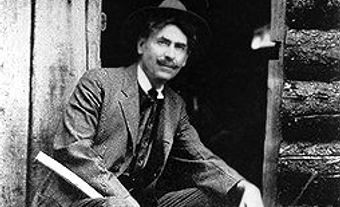Associations are voluntary, non-governmental, non-profit organizations composed of personal or institutional members, with or without federal or provincial incorporation. Associations are formed for a particular purpose or to advance a common cause, especially of a public nature. Related terms include foundation, society, institute, federation, alliance, club and union.
The freedom of association is one of the fundamental freedoms guaranteed by the Canadian Charter of Rights and Freedoms. It is estimated that individual Canadians on average are associated with at least three associations, such as business, trade and professional associations, chambers of commerce and boards of trade, labour organizations and unions, health and welfare groups, religious organizations, athletic associations, political organizations, learned societies, cultural groups, fraternal organizations and service clubs, charities, and community and neighbourhood groups.
Historical Background
The history of associations in Canada dates from when Samuel de Champlain founded the Ordre de Bon Temps in 1604, for the promotion of recreation and relaxation at Port-Royal. A few Canadian associations still in existence can trace their origins back to the 18th century. For example, the Halifax Board of Trade was founded in 1750, and predates the first recorded association of this type in the United States by approximately 18 years; the Grand Lodge of Upper Canada of the Ancient Free and Accepted Masons was established in 1792; and the Law Society of Upper Canada was organized in 1797. (Most dates given here are formation dates, not incorporation dates.)
Associations formed before Confederation include the Montréal Board of Trade (1822); the Nova Scotia Barristers' Society (1825); the Toronto Board of Trade (1845); the Barristers' Society of New Brunswick (1846); the Collège des médecins et chirurgiens de la province de Québec (1847); the Royal Canadian Institute (1849); the Québec Bar (1849); the Medical Society of Nova Scotia (1854); the Nova Scotia Board of Insurance Underwriters (1857); the Ontario Fruit Growers' Association (1859); the Ontario Educational Association (1861); the Nova Scotian Institute of Natural Science (1862); the Law Society of British Columbia (1863); the Nova Scotia Fruit Growers' Association (1863); the Entomological Society of Canada (1863), the first national association formed in the sciences; the College of Physicians and Surgeons of Ontario (1866); the Canadian Medical Association (1867); and the Ontario Dental Association (1867).
From 1867 to 1900 many new associations were established at both the national and provincial levels. New markets and the growth of factories and manufacturers spawned the expansion of trade associations to ensure fair competition. Examples of national associations formed during this period and still in existence are the Canadian Manufacturers’ Association (1871); the Royal Society of Canada (1882); the Canadian Institute of Surveying (1882, as the Association of Dominion Land Surveyors); the Engineering Institute of Canada (1887, as the Canadian Society of Civil Engineers); the Canadian Electrical Association (1889); the Royal Astronomical Society of Canada (1890, as the Astronomical and Physical Society of Toronto); the Canadian Bankers' Association (1891); the Canadian Education Association (1892); and the Canadian Institute of Mining and Metallurgy (1898).
From 1900 to the end of the Second World War, there was a steady increase in the number of associations. The period of greatest growth coincided with the economic prosperity of the 1960s. More than one-third of the 1,500 non-profit corporations incorporated under federal legislation from 1900 to 1970 were incorporated between 1966 and 1970. There are also hundreds of associations operating without federal or provincial incorporation. Many professional associations have developed evaluation standards for their members and their respective industries, and members can be measured using these standards.
Association headquarters are concentrated heavily in Toronto, Ottawa and Montréal. Vancouver, Edmonton, Calgary and Winnipeg and other large urban areas also have significant concentrations.
Origins and Growth
Several Canadian associations owe their origins to foreign parents, particularly American or British. When Canadian membership in foreign associations increased to a significant number, members withdrew from their parent group to form their own associations with headquarters in Canada. There are still scores of foreign associations with Canadian chapters or divisions, such as the American Society of Mechanical Engineers, New York, and the Royal Commonwealth Society, London. In addition, several international associations such as the International Air Transport Association have their headquarters in Canada.
Many Canadian labour unions are affiliated with international unions headquartered in the US; however, the percentage of international union membership in Canada has significantly decreased as membership in national unions has correspondingly increased, continuing a 30-year trend as new national unions and independent local organizations were organized in Canada. By 1995, international union membership had fallen from two-thirds of all union membership in Canada to 29 per cent, and national union representation rose from 21 per cent to 57 per cent. By 2003, more than four million Canadians belonged to a union.
Industry associations provide valuable peer-to-peer support. A 2006 study published by Statistics Canada found that innovative firms refer to industry associations almost 10 times more frequently than federal government research institutes and up to 4.4 times more frequently than universities for information, solutions and business ideas.
The proliferation of associations is partially a result of the growth in population, the expansion and diversification of the economy, and greatly increased government activity, especially in health care and social services, as well as the desire for communication with others who share common interests.
Types
There have been various attempts to classify associations into types according to purpose, function and structure. No classification has been satisfactory because of the diversity in membership, objectives, structure, methods of operation and concerns. One classification makes a distinction between those associations that function primarily for the benefit of the public (charitable organizations) and those that carry on their activities primarily for the benefit of their members (membership organizations). Another distinguishes between corporate-type and federation-type organizations. The latter may bring together associations devoted to the same subject, or to several different subjects. It is also possible to classify associations according to their principal activity.
Incorporation
Incorporation is often advantageous or necessary for non-profit corporations to carry out certain activities. The principal advantages of incorporation as a non-profit corporation without share capital are that it provides greater continuity and permanency for the organization, frees members from liability for the debts and obligations of the corporation, and facilitates certain activities such as the holding of real estate. Such corporations must be conducted without pecuniary gain for the members.
Federal non-profit corporations in Canada include many of the large charitable and membership organizations and virtually all the boards of trade and chambers of commerce incorporated under the Boards of Trade Act. For associations whose activities are within a single locality or province, provincial incorporation as a non-profit corporation is sufficient. Each province has its own requirements and procedures for incorporation.
Organization and Operation
The board of directors of an incorporated non-profit corporation manages the corporation's business and affairs. The board is legally responsible for adhering to the corporation constitution and bylaws, for making policy to further the attainment of its stated goals and objectives, and for appointing the chief executive officer. A small group of board members, including the officers, constitutes the executive committee, which sits between board meetings to make decisions on behalf of the board.
The usual officers of an association are the president, vice-president, treasurer and secretary. The officers may be selected by the membership or appointed by the board, and their duties are set out in the bylaws or established by the board. The chief executive officer or executive director (the title may vary) performs duties assigned by the board of directors. This officer executes policies as prescribed by the board, selects employees for the operation of the association office, prepares budgets, approves expenditures and attends all meetings of the board and its executive committee.
The committee structure of an association usually reflects its goals and objectives. Typical committee responsibilities include membership, nominations, education, research, publishing, and public and government relations. Officers and directors are expected to render a periodic account of their stewardship, usually in the form of an annual report. The requirements for membership are usually stated in the bylaws of the association and there may be several classes of membership, such as member, associate, student and honorary member. Some associations admit anyone interested in its activities; others, such as professional associations, have specific requirements for membership. In general, charitable organizations rely on government grants for their income and on donations from business and the general public, whereas membership organizations obtain most of their income from fees and dues.
Contribution to Society
Associations registered federally as charitable organizations are legally obligated to provide services beneficial to the community at large. Although membership associations have the advancement of the interests of their members as their primary aim, they too may respond to changing conditions in society by engaging in programs and activities in the public interest. Associations have an important role in building consensus in society by providing the mechanism for their members to reach agreement on social values, on objectives to be pursued and on the means to achieve objectives. Through interaction with government, associations participate in shaping public policy. National associations, many of which are bilingual, can contribute to the strengthening of national unity by improving communications and understanding among the different peoples and regions of Canada.
Associations have evolved as peer support or mentoring agencies that offer members the experience and resources within their areas of interest. Associations are also important as sources for information about hundreds of specialized activities in our society. By helping those in need, supporting and publishing worthwhile research, educating members of the public, contributing to the personal development of citizens and pressing for just and humanitarian causes, associations are making significant contributions to Canadian society and its citizens.
Extensive information about associations in Canada is available in the publication Associations Canada, which is published annually by Grey House Publishing Canada. Associations Canada was created by the merger of two annual directories: Directory of Associations in Canada and Associations Canada: An Encyclopedic Directory. Today, the publication provides details regarding the activities of a variety of associations in Canada including Canadian and foreign associations, professional associations, and non-profit and voluntary organizations. The directory uses more than 1,500 subject classifications ranging from accounting to zoology to describe the activities of more than 18,000 associations listed.
See also: Foundations.

 Share on Facebook
Share on Facebook Share on X
Share on X Share by Email
Share by Email Share on Google Classroom
Share on Google Classroom


